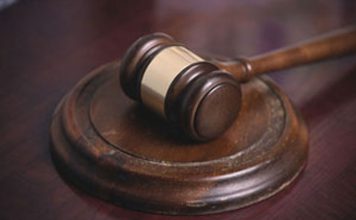The Rotary Club of Gilroy gave the city $25,000 to purchase one
of three downtown bronze sculptures that will highlight the garlic
capital’s historic past.
The Rotary Club of Gilroy gave the city $25,000 to purchase one of three downtown bronze sculptures that will highlight the garlic capital’s historic past.
The first piece of Gilroy’s statuesque triumvirate is a 36-inch tall portrayal of the city’s founder, John Cameron Gilroy, called “Hospitality.” The finished statue will go in at the corner of Monterey and Sixth streets early in 2009, according to Rotary Club President Jane Howard, who helped raise the $25,000 along with Gilroy Sunrise Rotary Club leader Roy Johnson.
“We wanted to honor our founding father, John Gilroy, and hospitality also makes sense for the Rotary Club,” Howard said Wednesday.
All told, Gilroy’s bronze triumvirate will cost about $77,000, with $15,000 coming from the city, $10,000 from the Gilroy Downtown Association and $2,000 from the Wal-Mart Foundation. Thanks to fund-raising work by the city’s Public Arts Committee, the rest came from the Rotary Club and likely the James Group, one of local developer James Suner’s partnerships. The group has pledged the remaining $25,000, according to Cathy Mirelez, the city’s cultural arts and museum supervisor.
All this fund-raising delighted artist Marlene Amerian.
“When a community wants something that much, and they rally forth like this, it’s such a wonderful thing,” said Amerian. The artist will work around the clock for the next five months on the remaining two statues that recreate Gilroy’s history, she said.
Part of this history begins with recognizing James Houck, who established a stage shop at the corner of Lewis and Monterey Streets in 1850. Amerian’s sculpture, “Ready to Roll,” will stand at the west side corner of Fourth and Monterey Streets, across the road from Houck’s old shop.
It depicts a tireless Houck harnessing his horse, with his hat pulled down. His flowing coat naturally conveys the sculpture’s theme of movement.
From Houck’s shop, Gilroy grew south and north along Monterey Street, with doctors’ offices, canneries, garlic processing plants, stables, hotels and saloons. Then came the bank of Gilroy in 1871, near the northeast corner of Monterey and Martin Streets, where Amerian’s remaining sculpture will sit.
Electa Ousley was one of the first land owners in the westward movement, and she raised 11 children after her husband died in a terrible farm accident, Amerian said. Her sculpture shows local banker Thomas Rey shaking hands with Ousley. Both figures perpetually glide toward each other, reaching out for a handshake in a frozen moment of commerce.














